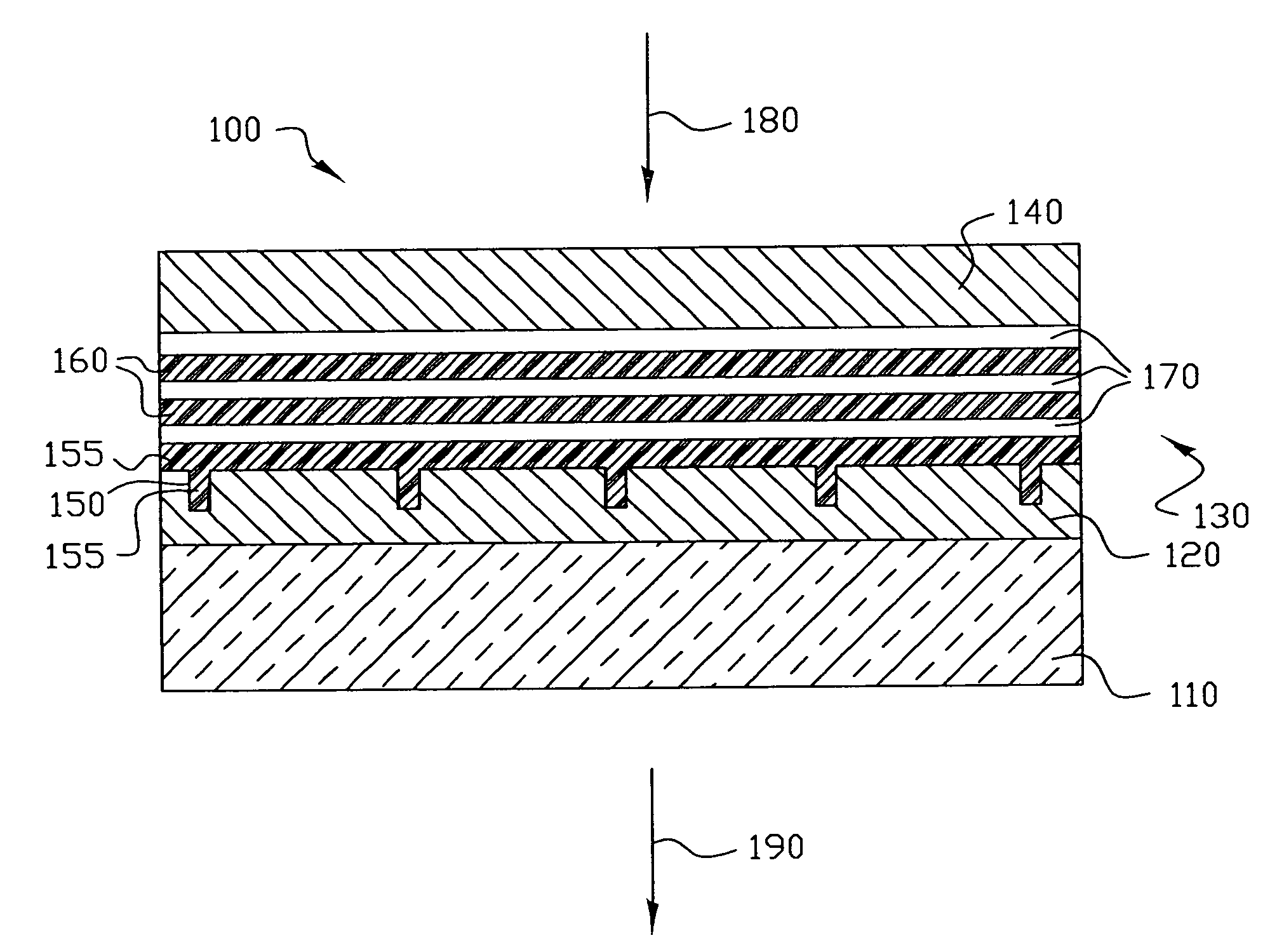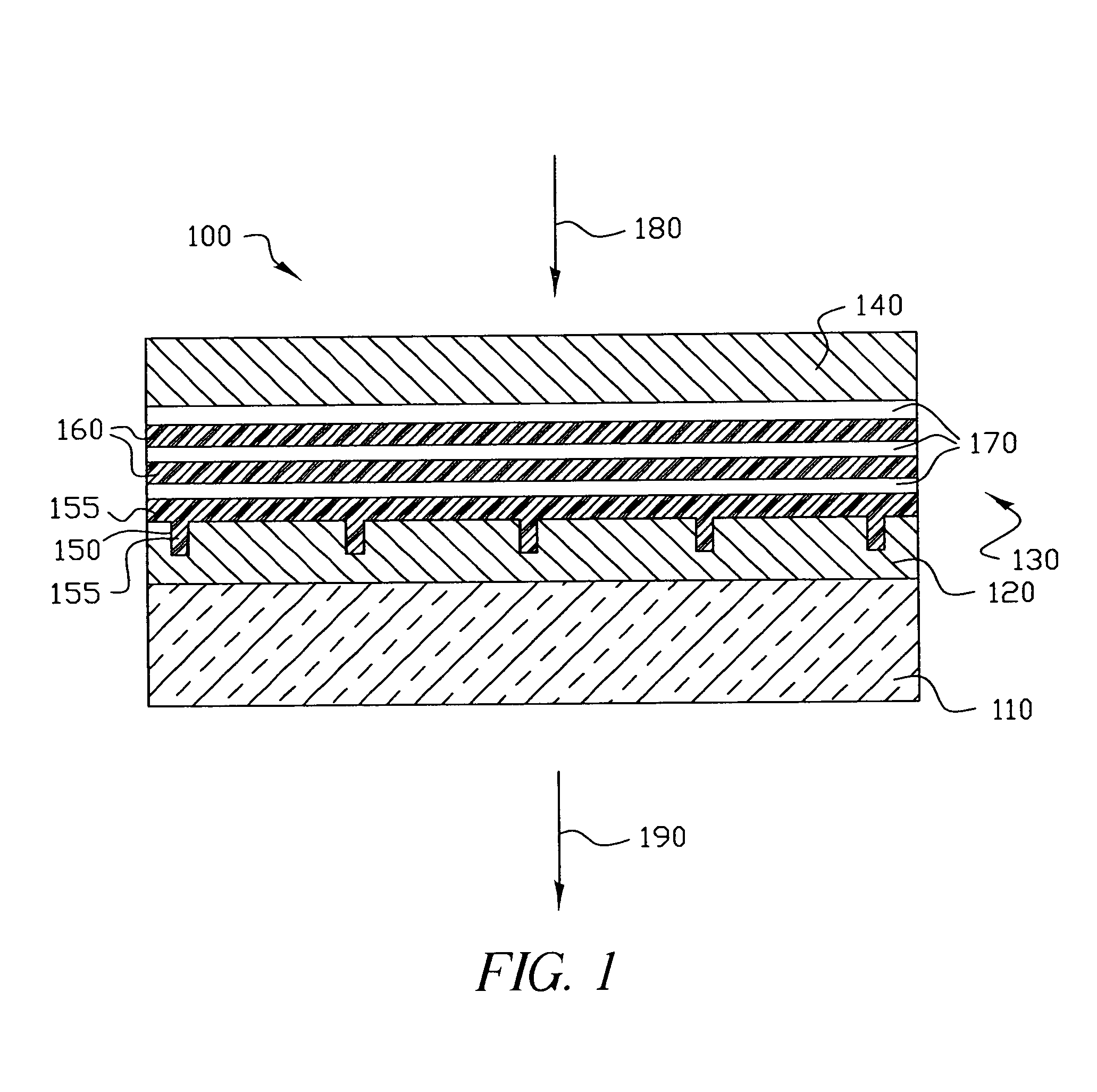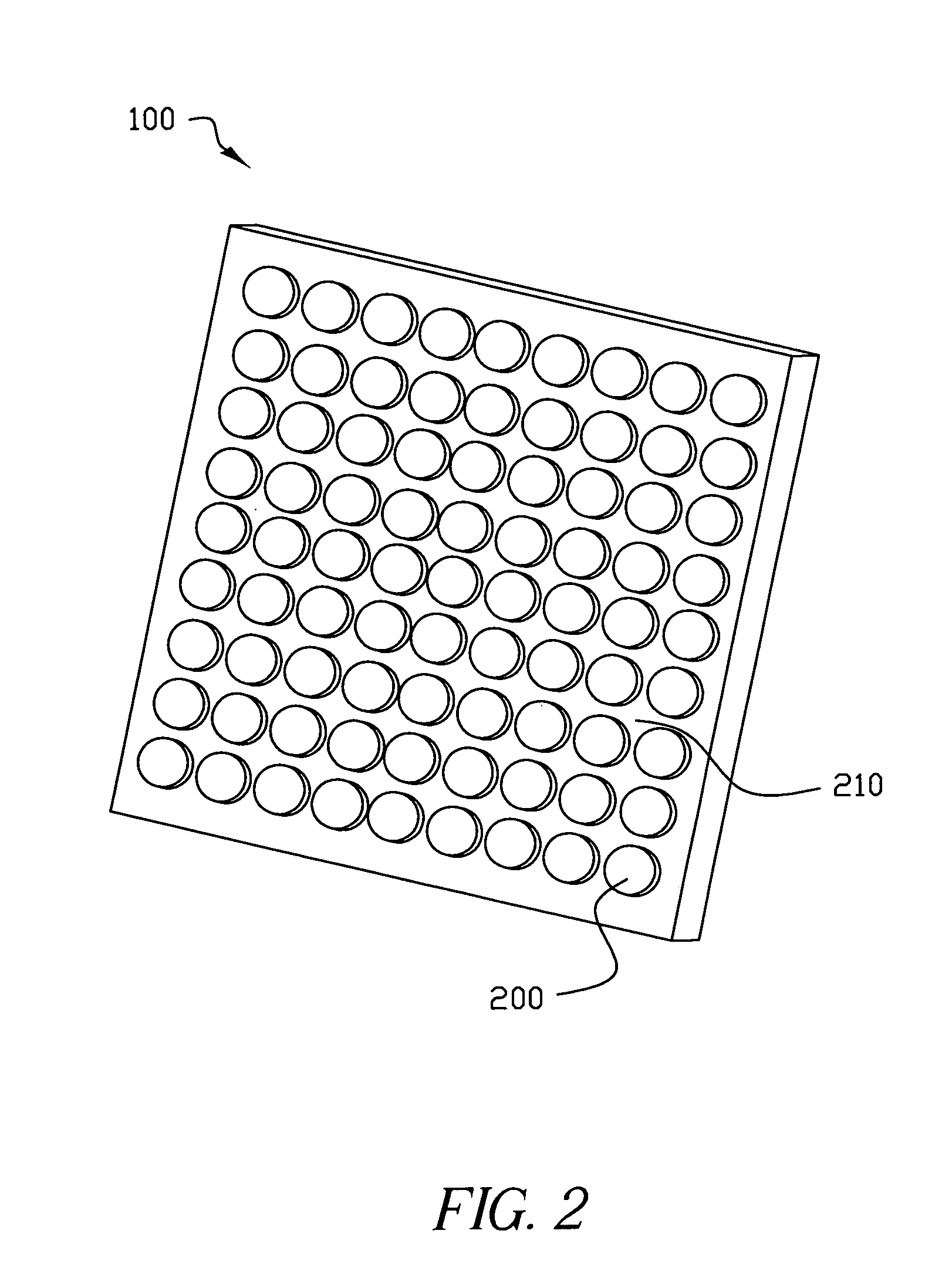Providing an improved organic vertical cavity laser array device
a laser array and organic technology, applied in semiconductor lasers, optical resonator shapes and construction, active medium materials, etc., can solve the problems of degradation problems of organic materials, the density level (and pixel size) is far beyond the capabilities, and the only way to achieve high power densities, etc., to reduce scattering losses, increase power conversion efficiency, and reduce scattering losses
- Summary
- Abstract
- Description
- Claims
- Application Information
AI Technical Summary
Benefits of technology
Problems solved by technology
Method used
Image
Examples
Embodiment Construction
[0019]To enable a large area laser structure, which emits single-mode (or a few modes), it is necessary to construct a two-dimensional laser array device 100 as shown schematically in FIG. 1 and in accordance with the present invention. FIG. 2 shows a top-view of the two-dimensional laser array device 100 where on the surface of the VCSEL needs to be defined lasing pixels 200 separated by interpixel regions 210. If single mode lasing action is desired, then the emission from the various pixels needs to be phase-locked, i.e., intensity and phase information must be exchanged amongst the pixels. This is best obtained by weakly confining the laser emissions to the pixel regions by either small amounts of built-in index or gain guiding and arranging the pixels in a periodic two-dimensional array. For the laser pixels 200 arranged in a square two-dimensional array, phase-locked operation results in each element being 180 degrees out of phase with its four nearest neighbors (E. Kapon and ...
PUM
 Login to View More
Login to View More Abstract
Description
Claims
Application Information
 Login to View More
Login to View More - R&D
- Intellectual Property
- Life Sciences
- Materials
- Tech Scout
- Unparalleled Data Quality
- Higher Quality Content
- 60% Fewer Hallucinations
Browse by: Latest US Patents, China's latest patents, Technical Efficacy Thesaurus, Application Domain, Technology Topic, Popular Technical Reports.
© 2025 PatSnap. All rights reserved.Legal|Privacy policy|Modern Slavery Act Transparency Statement|Sitemap|About US| Contact US: help@patsnap.com



